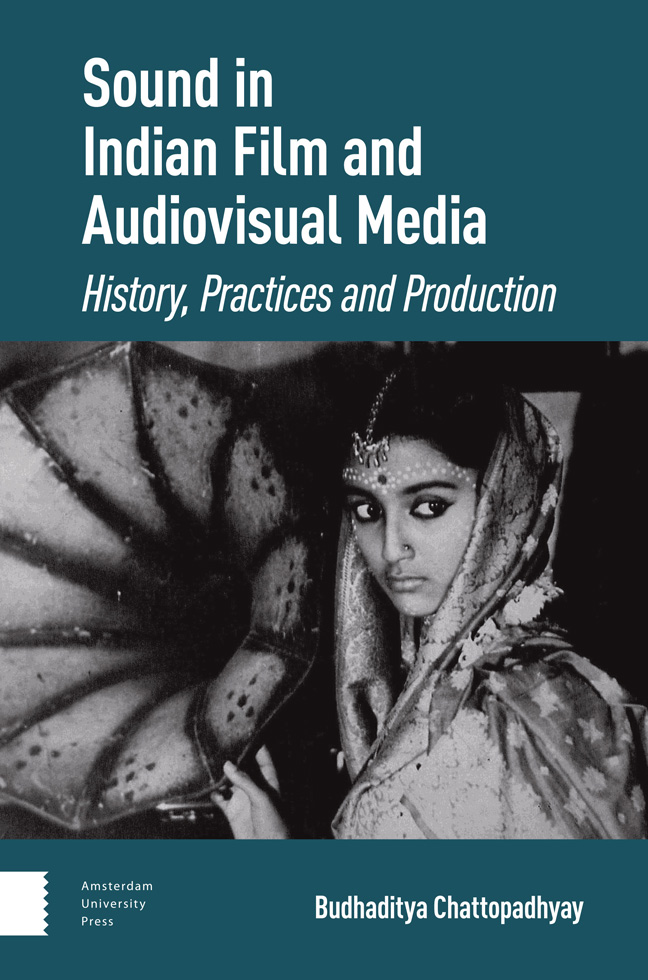Book contents
- Frontmatter
- Contents
- Acknowledgements
- 1 Introduction
- 2 The Technological Frameworks
- 3 Direct Sound and Early Talkies
- 4 Sound of the Golden Age
- 5 Tracing the Sound in Satyajit Ray’s Film-works
- 6 Popular Films from the Dubbing Era
- 7 Parallel Sounds, Radical Listening – Part I
- 8 Sholay, Stereo Sound and the Auditory Spectacle
- 9 The Advent of Digital Sync Sound
- 10 The Surround Revolution
- 11 Sound in the Audiovisual Media Arts
- 12 Parallel Sounds, Radical Listening – Part II
- 13 A Concluding Voiceover
- Bibliography
- Filmography
- Index
9 - The Advent of Digital Sync Sound
Published online by Cambridge University Press: 20 February 2024
- Frontmatter
- Contents
- Acknowledgements
- 1 Introduction
- 2 The Technological Frameworks
- 3 Direct Sound and Early Talkies
- 4 Sound of the Golden Age
- 5 Tracing the Sound in Satyajit Ray’s Film-works
- 6 Popular Films from the Dubbing Era
- 7 Parallel Sounds, Radical Listening – Part I
- 8 Sholay, Stereo Sound and the Auditory Spectacle
- 9 The Advent of Digital Sync Sound
- 10 The Surround Revolution
- 11 Sound in the Audiovisual Media Arts
- 12 Parallel Sounds, Radical Listening – Part II
- 13 A Concluding Voiceover
- Bibliography
- Filmography
- Index
Summary
Abstract: In the ninth chapter I study the advent of digital sync sound and the resultant (re-)emergence of spatial awareness in Indian cinema’s ‘digital era’. Since the late 1990s, a large-scale conversion from analogue recording and production practices to digital technologies has been taking place in Indian cinema. Digital technology has been integrated into the production and post-production stages of filmmaking, as well as to reproduction and projection formats. This chapter carefully studies how the processes of digitalization have made a substantial impact on the narrative strategies and aesthetic choices of extant cinematic sound production, informing the creation of spatial presence in film space via novel modes of interplay between quasi-diegesis and mimesis.
Keywords: Indian cinema, film history, digital technology, sync sound, spatial presence
The Auditory Setting in the Digital Era
It isn’t difficult to observe that sound in Indian films has been inconsistently produced due to evolving phases of production practices, affected by technological innovations and shifts. There have been phases of sound practice (such as the entire ‘dubbing era’), that cared less about quality, giving more importance to the typical narrative tropes such as songand- dance sequences, dramatic use of sound effects, studio processing, sound editing, and dialogue replacement, as explained in chapter 6. However, there are also phases such as the ‘digital era’ (2000–) where some degree of careful and creative rendering of sound is observed. In this light, I consider the advent of digital technology in the form of ‘sync sound’ and surround design in Indian cinema to be significant, given the evolution of sound use through earlier phases of Indian cinema’s production practices. The scholarly perspectives on sound production in the digital era in Hollywood (Kerins, 2011, 2006; Sergi, 2004; Sonnenschein, 2001) and the aesthetic impacts of digital production practices on the cinematic experience have often been described by film scholars as ‘real’ (Altman, 1992), ‘sensorial’ (Sobchack, 2005), or ‘authentic’ (Biancorosso, 2009). Although these expressions cannot be uniformly applied to Indian cinema in the context of its historical trajectory, much can be discussed along these lines. As I have mentioned in the Introduction and earlier chapters, mainstream Indian film’s general tendency has been to ignore subtleties of sound while reconstructing the pro-filmic space into film space.
- Type
- Chapter
- Information
- Sound in Indian Film and Audiovisual MediaHistory, Practices and Production, pp. 155 - 168Publisher: Amsterdam University PressPrint publication year: 2023



